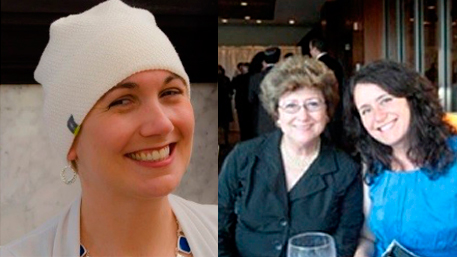
08/26/2020
Hot Topics of the Day are picked by experts to capture the latest information and publications on public health genomics and precision health for various diseases and health topics. Sources include published scientific literature, reviews, blogs and popular press articles.
Sign up MyPHGKB to receive the daily hot topic email alert.
Archived Hot Topics of the Day By Date
Population-scale longitudinal mapping of COVID-19 symptoms, behaviour and testing
WE Allen et al, Nature Human Behavior, August 26, 2020
Sex differences in immune responses that underlie COVID-19 disease outcomes
T Takahashi et al, Nature, August 26, 2020
Two metres or one: what is the evidence for physical distancing in covid-19?
NR Jones et al, BMJ, August 25, 2020
Changes in mobility patterns in Europe during the COVID-19 pandemic: Novel insights using open source data
AS Islind et al. ARXIV, August 24, 2020
Blockchain-enabled Internet of Medical Things to Combat COVID-19
HN Dai et al, ARXIV, August 23, 2020
“My disability has become an ability”
E Manna, Nature Medicine, August 24, 2020
The value of genomic sequencing in complex pediatric neurological disorders: a discrete choice experiment.
Goranitis Ilias et al. Genetics in medicine : official journal of the American College of Medical Genetics 2020 Aug
Alaska Native genomic research: perspectives from Alaska Native leaders, federal staff, and biomedical researchers.
Hiratsuka Vanessa Y et al. Genetics in medicine : official journal of the American College of Medical Genetics 2020 Aug
Disclaimer: Articles listed in Hot Topics of the Day are selected by Public Health Genomics Branch to provide current awareness of the scientific literature and news. Inclusion in the update does not necessarily represent the views of the Centers for Disease Control and Prevention nor does it imply endorsement of the article's methods or findings. CDC and DHHS assume no responsibility for the factual accuracy of the items presented. The selection, omission, or content of items does not imply any endorsement or other position taken by CDC or DHHS. Opinion, findings and conclusions expressed by the original authors of items included in the Clips, or persons quoted therein, are strictly their own and are in no way meant to represent the opinion or views of CDC or DHHS. References to publications, news sources, and non-CDC Websites are provided solely for informational purposes and do not imply endorsement by CDC or DHHS.
- Page last reviewed:Feb 1, 2024
- Page last updated:Apr 25, 2024
- Content source:





